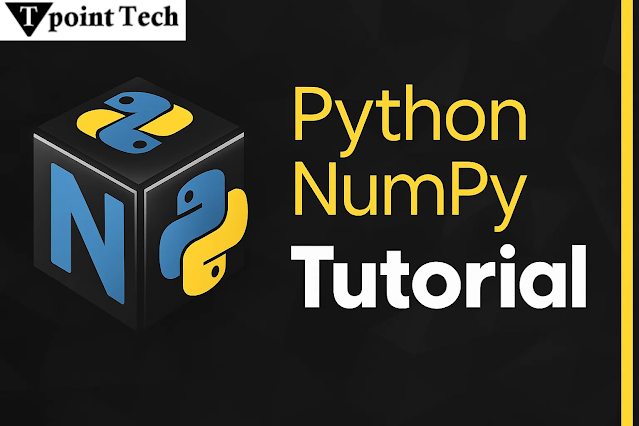PHP Tutorial for Backend Development in 2025
Master the Server Side with PHP
In the dynamic world of web development, backend technologies remain essential in building fast, secure, and interactive applications. One language that continues to stand strong—even in 2025—is PHP. This PHP Tutorial is designed to introduce you to modern backend development using PHP, helping you understand its role in today’s tech landscape.
Whether you're new to programming or shifting from frontend to full-stack development, this guide answers a key question many still ask: What is PHP? And more importantly, why is it still so widely used?
What is PHP?
Let’s start with the basics: What is PHP?
PHP (short for PHP: Hypertext Preprocessor) is a widely-used, open-source, server-side scripting language designed specifically for web development. PHP scripts are executed on the server, and the resulting output is sent to the client’s browser as standard HTML.
Over the years, PHP has evolved into a modern, feature-rich language that supports object-oriented programming, integrates easily with databases, and can handle large-scale web applications. Even in 2025, PHP continues to power a significant portion of the internet—including content management systems, e-commerce platforms, and APIs.
Why Choose PHP for Backend Development in 2025?
While new languages and frameworks emerge frequently, PHP remains one of the most reliable and efficient technologies for backend development. Here’s why:
1. Proven Stability & Maturity
PHP has been around for more than two decades. Its long-standing stability makes it a safe and dependable choice for developers working on mission-critical systems.
2. Widespread Use
Millions of websites and platforms are built with PHP. From personal blogs to enterprise-level applications, PHP is everywhere—making the knowledge of it valuable and transferable.
3. Huge Ecosystem
PHP has a vast ecosystem of libraries, tools, and frameworks. Modern frameworks like Laravel and Symfony streamline development and follow best practices for clean, maintainable code.
4. Cost-Efficient Hosting
Since PHP is supported by nearly every web hosting provider, it remains a budget-friendly solution for startups and freelancers alike.
5. Strong Community Support
The PHP community is massive and active, offering continuous improvements, tutorials, documentation, and troubleshooting help.
What You’ll Learn in This PHP Tutorial
This PHP Tutorial is designed to help you understand how PHP works in a modern backend environment. It offers a beginner-friendly approach to grasp PHP's fundamental concepts, as well as a roadmap to explore advanced development.
Topics you’ll explore:
-
How PHP powers the server-side logic of web applications
-
Handling dynamic data through forms and user input
-
Working with sessions and cookies for state management
-
Managing backend logic, including user authentication
-
Interacting with databases and performing CRUD operations
-
Organizing code with functions, classes, and reusable components
-
Understanding error handling and performance optimization
-
Exploring how PHP connects with frontend frameworks through APIs
This tutorial aims to show that learning PHP is not just about syntax—it's about building real, interactive applications that solve problems and deliver value.
PHP in the Modern Web Stack
PHP has come a long way from its early scripting days. Today, PHP is at the core of countless full-stack applications and integrates with cutting-edge technologies:
-
REST APIs: PHP is commonly used to build robust APIs that connect with frontend apps built in React, Vue, or Angular.
-
Microservices: Modern PHP frameworks support modular, scalable architecture perfect for cloud-native development.
-
Headless CMS: PHP powers many headless content management systems that serve structured content via API endpoints.
-
Docker and DevOps: PHP applications are easily containerized and deployed using CI/CD pipelines.
Thanks to its flexibility, PHP adapts to modern workflows while staying true to its simple roots.
PHP and Security
Security is at the heart of backend development, and PHP supports a wide range of built-in functions and third-party tools to secure applications. From protecting user data through encryption to preventing common attacks like SQL injection and XSS, PHP offers reliable mechanisms to ensure your application remains safe and secure.
Understanding how to implement secure practices is a key part of this PHP Tutorial. In 2025, security isn’t optional—it’s foundational.
Career Scope of PHP Developers in 2025
With the growing demand for dynamic websites, data-driven platforms, and custom web applications, PHP continues to offer a wide range of career opportunities. Whether you're a full-time employee, freelancer, or startup founder, PHP opens doors.
Common job roles include:
-
PHP Backend Developer
-
Full-Stack Developer (PHP + JavaScript)
-
CMS Developer (WordPress, Magento, Drupal)
-
API Engineer using modern PHP frameworks
-
Laravel or Symfony Specialist
Many companies also seek developers with PHP experience for maintaining legacy systems or upgrading older applications to modern standards.
Final Thoughts
To recap, this PHP Tutorial helps you get started with a proven and powerful backend language that remains highly relevant in 2025. You now know what is PHP, why it still matters, and how it fits into today’s backend development landscape.
PHP offers a solid foundation in web development, making it an ideal choice for developers at any stage of their journey. It’s fast, versatile, open-source, and supported by a massive community—all the right ingredients for a future-proof skill set.
Whether you want to build web applications, APIs, or complex systems, PHP gives you the tools to turn your ideas into real-world solutions.



Comments
Post a Comment